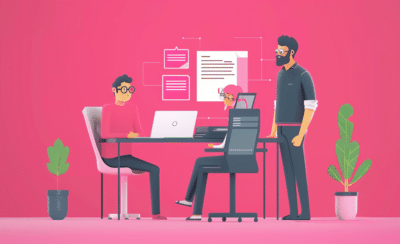For a company to achieve a true digital transformation, they need to start with a strategy. The point is to leverage each and every opportunity for the business with new technology, to better facilitate change and innovation. Your strategy should be outlined with a clear roadmap, which will involve every department within the organization. You’ll want to plan for fluid goals, as this is an ongoing journey and your end goals will change as your business forges ahead into new digital territory.
As more and more businesses embark on their own digital transformations, there are some consistent key players supporting the changes.
TLDR; Contents
Iot Devices
The internet of things (IoT) refers to all the physical devices (smartphones, wearables, vehicles, home appliances, etc.) that are embedded with software and sensors that allow them to connect and exchange data.
ZDNet predicts that nearly 20 billion IoT devices will be online within the next two years, which means data will continue to be created at an unprecedented rate. With the increase in volume comes more demand for real-time analysis, so that we can make use of all this stored information. The regular old cloud just won’t keep up.
The Hybrid Cloud
When you think about the cloud, there’s a basic understanding that you can have either a public or private one. You can use a 3rd party to collect, store, and provide an analytical dashboard for your data, or keep it on-premise yourself.
But, most of the momentum in digital transformation today is happening with a hybrid option. As the name indicates, this is when you use both the public and private cloud to meet your organizational needs. There’s no right or wrong way to do it — the point is to use whatever best suits your business. For example, you might choose to store your data in the public cloud but run your application software within your on-premise cloud.
Rapid data processing is the name of the game here, and the flexibility of the hybrid approach allows an organization to create the specific environment they need to optimize their data collection and analysis. Having the ability to use different types of storage for different tasks is what helps to maximize productivity and efficiency.
Artificial Intelligence
AI, or machine learning, already supports many areas of a company along their digital transformation journey. Organizations today are already using it for things like onboarding, accounts payable and invoicing, compliance and risk, and managing a digital workforce.
But when it comes to data analysis, the truth is that these machines simply do a better job than humans. As the sheer volume of data continues to explode, we will continue to rely on our intelligent machines to collect, segment, and analyze large volumes of data that come in from multiple sources.
The way in which these 3 areas magically work together to drive digital transformation forward has still yet to be realized by many. But, the path is clear. Hybrid cloud solutions give organizations the ability to process their data in real-time and will serve as one of the primary foundational elements of an IoT cloud architecture. This will pave the way forward for future AI initiatives.





